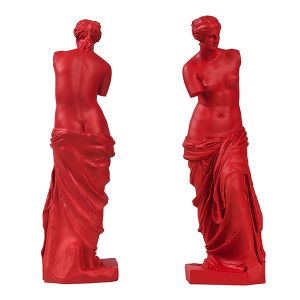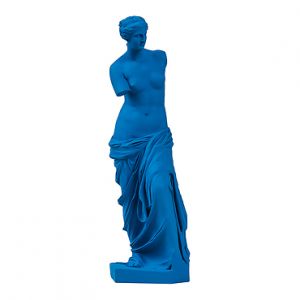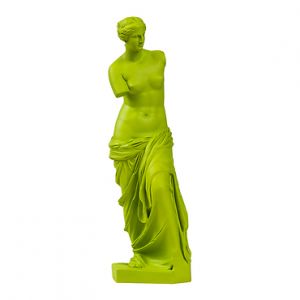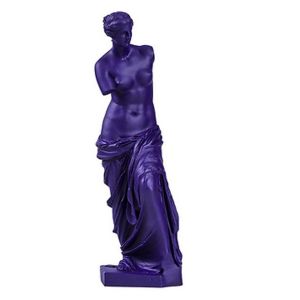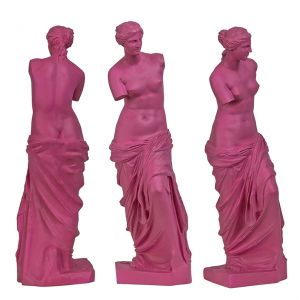Aphrodite, known as the Venus de Milo
The Cyclades, Greece - 2nd century B.C.
Paris, Louvre Museum MA 399
Rmn-GP reduction in colored resin from the original in Paros marble
Contrary to conventional wisdom, the artists of antiquity did not choose marble for its pure whiteness. When studied under a microscope, many works reveal traces of red, blue, green or yellow pigments. Surprise: Greek sculpture was poly- chrome.
To revive the spirit of antique sculpture, mistakenly thought to be austere, the Venus de Milo have been covered with bright colours.
A farmer discovered the statue near the ruins of an antique theatre on the island of Melos (Milo) in 1820. The Marquis de Riviere bought it and presented it to Louis XVIII in 1821. The king later gave it to the Louvre.
The Venus de Milo occupies a foremost place in the history of Greek sculpture and the taste for the antique. Its style is characteristic of the late Hellenistic period, which was both classical and innovative. The slightly severe facial expression is rather classical, but the twist of the body is new. This swirling posture and the realistic modelling are strokes of genius.
The Venus de Milo was unanimously praised as soon as it was discovered. Its arri- val in France was an event and a commemorative medal was struck for the occasion. Because of this veneration, it escaped the reconstruction of the missing limbs, which was a common practice in nineteenth-century restoration.
The many reproductions shown in European capitals attest to the craze for this figure, which the sculptor Auguste Rodin (1840-1917) praised for her "splendid belly, as wide as the sea."
Département des Ateliers d'Art Moulage et Chalcographie
- Dimensions
- H. 30 cm L. 10 cm P. 9,5 cm
- Size
- H. 11.8" W. 3.9" D. 3.6"
- Material
- Publisher
-
| RB002326 |
|
Bleu foncé |
|
| RB002327 |
|
Bleu clair |
|
| RB002328 |
|
Prune |
|
| RB002329 |
|
Vert |
|
| RB002330 |
|
Jaune |
|
| RB002331 |
|
Orange |
|
| RB002333 |
|
Rouge |
|
